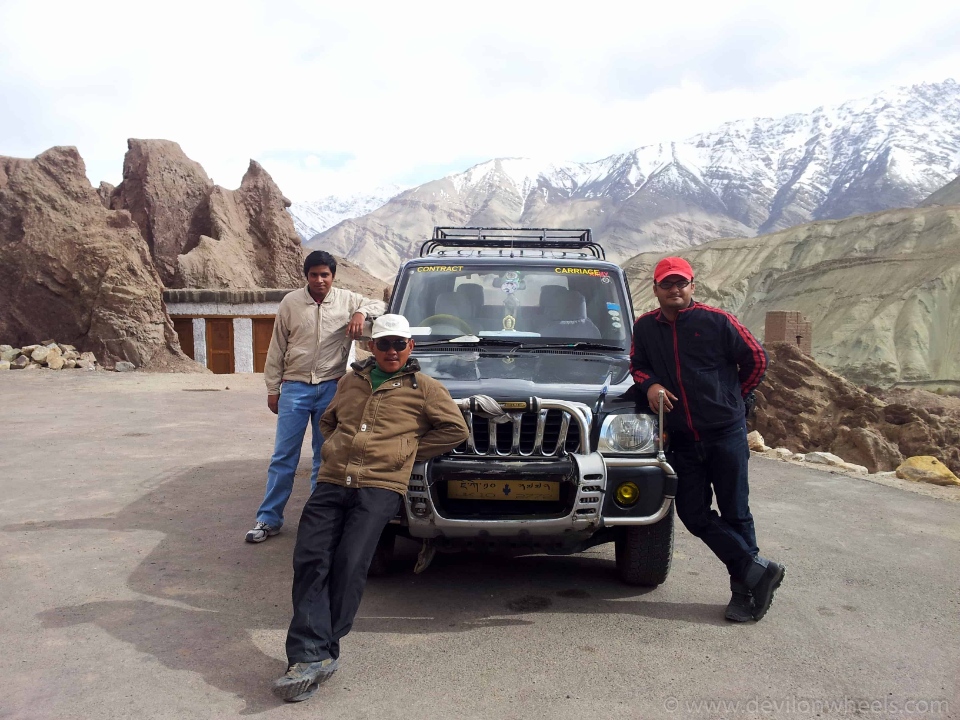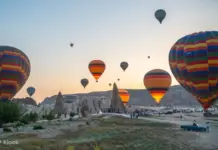Indian Railways is one of the largest railway networks in the world. There are more than 20,000 trains running on an extensive rail network. India’s first metro rail services started in Kolkata and today other cities like Delhi, Chennai, Bengaluru, Hyderabad, Jaipur, Gurgaon, Mumbai, Cochin and Lucknow have active metro rail networks. You can also plan to take luxury trains like Palace on Wheels, Maharaja Express, Golden Chariot and Deccan Odyssey.
- India trip tips — 9+ things to know before going to India
- The ULTIMATE Taj Mahal travel guide: How to get there, Tickets, Things to do, Tips & MORE
- Where to go & what to do in Varanasi? — 15+ places to visit & best things to do in Varanasi
- What to buy in India? — 29+ best gifts from India & best things to buy in India
- Leh Ladakh bike trip itinerary — How to spend 6 days in Ladakh by motorbike?

India also has toy trains to famous hill stations. The historic Kalka-Shimla toy train is a popular way to reach Shimla (Himachal Pradesh, North India). The Darjeeling Himalayan Railway is the oldest toy train that takes tourists through the rolling hills and lush green tea plantations of Darjeeling (West Bengal, Eastern India). The Nilgiri Mountain Railway is the highlight for reaching Ooty and Coonoor Hill stations (Tamil Nadu, South India). Matheran Hill Railway is a narrow gauge heritage railway in Maharashtra (Western India). Kangra Valley Railway is located in the sub-Himalayan region of Kangra Valley (North India).

Cuisine and dining rules
Indian cuisine is one of the few truly international cuisines that can be found in Western countries, but Indian food in India is better. It’s fresher, spicier, more flavorful and more enjoyable.
Each of India’s 29 states has very different flavors in its cuisine and has its own specialties. Northern India favors stews with lots of meat, South India favors dishes with spicy flavors. There are never duplicate recipes of the same dish in different regions. Therefore, traveling to India is wonderful with unique culinary discoveries.

Finding food is not a difficult thing in India, because every street and city is filled with the aroma of delicious dishes. Spices play an important role in Indian cuisine. They are used in different forms such as chopped, ground, roasted, stir-fried, fried and even topped. Pepper, turmeric, cardamom and cumin are some examples of Indian spices commonly used in Indian kitchens.
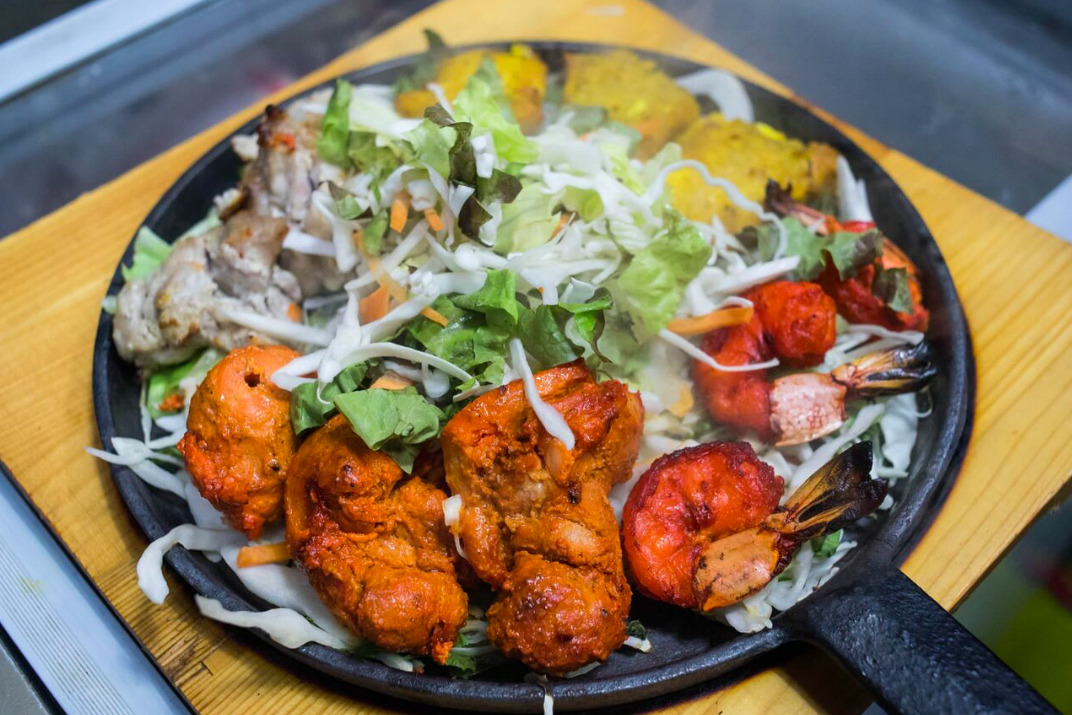
India is home to some top-rated restaurants. One such restaurant is Indian Accent in Delhi. This restaurant was named among the World’s 50 Best Restaurants in 2019. It features innovative Indian dishes by adding Indian flavors and traditions. In addition, Bukhara restaurant is a multi-award winning restaurant, offering a varied menu of grilled meats, vegetables and delicious sandwiches.
Many religions in India have their own dietary rules. Muslims avoid pork, Hindus avoid beef, and some Hindus and Buddhists are vegetarian or vegan. More specifically, Jains are vegetarian but avoid certain vegetables (most notably onions, garlic and potatoes) and try to avoid harm to all living things.

Don’t be afraid to explore street food. Discovering street food is an experience that should not be missed when traveling abroad. And sometimes, the best dishes are not prepared in luxury restaurants, but in some small corner. Indian cuisine is no exception. This country is one of the countries with a diverse culture and cuisine, which is worth trying. The only thing to note is that the food is often spicy or very spicy. In addition, you should choose fresh dishes and avoid dairy products because they can sometimes spoil or not be preserved well due to being sold on the side of the road. Eat in clean, hygienic places.
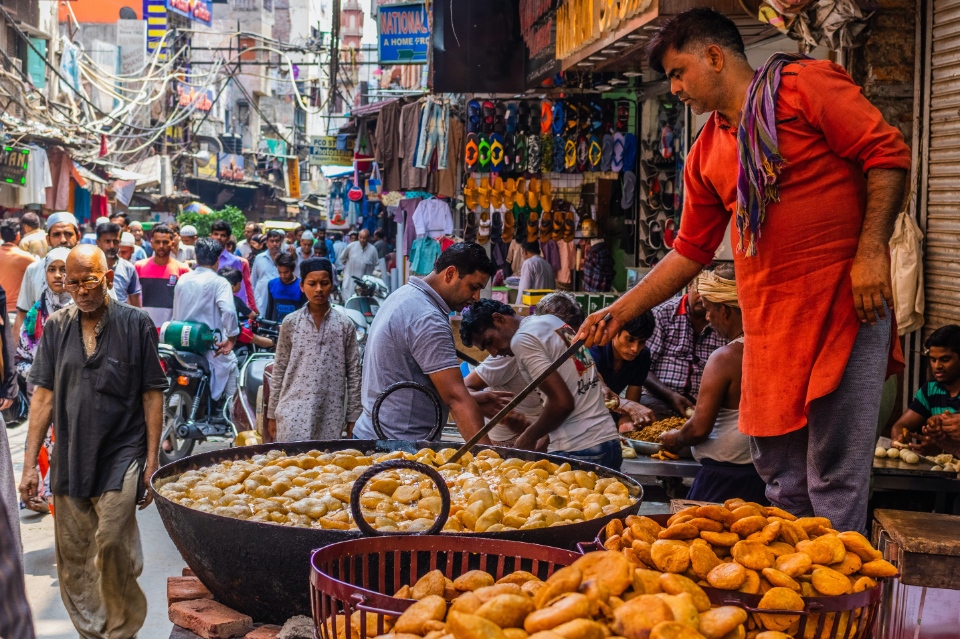
Use your right hand to hold and grasp everything. Remember the right hand rule when traveling here. In local culture, the right hand is considered pure, clean, even lucky. And the left hand will carry the opposite opinion: only used to do dirty work such as cleaning shoes, feet… Therefore, when giving food, drinks or items to others, use your right hand.

Do not use your finger to point
In many countries, it is normal to use your index finger to show directions or point to a specific item. But this is definitely not the case in India because people consider pointing at objects and places to be rude and impolite. If you are giving directions or want to point to something, use your whole hand to point, instead of just one finger.

Some rules when entering temples, shrines, religious sites and churches

In India, religion is taken very seriously, so you should learn the rules before visiting temples, mosques, monasteries and gurdwaras (Sikh shrines). Check to see if you are allowed to visit. There are some temples and mosques that do not allow worshipers to enter. Or mosques may also be closed on Fridays or during prayer times.
Before entering any religious building, take off your shoes and have a scarf or shawl ready to cover your head in case one is required.

Avoid pointing the soles of your feet towards a person or deity – this is considered disrespectful. Likewise, avoid touching any people or mannequins on the head. It is customary to circle Buddhist and Hindu temples clockwise, in a ritual cycle known as parikrama.
Making an offering or leaving a donation is often expected but be wary of priests or monks soliciting donations. Giving something is appropriate, but don’t feel pressured to leave a large sum of money.

Popularity of begging
Begging is a common and long-standing practice in India. Foreign tourists coming here will often be approached by beggars. Whether or not you give money is your personal choice, however, you should be careful because some of these beggars can be scammers.

Not all restaurants are hygienic

If you are coming to India for the first time, you should be cautious about your digestive condition. Indian dishes are mostly spicy, have strong flavors, and are full of spices and additives, so they will be extremely stimulating to your stomach. In addition, this is a country with food safety and hygiene among the least hygienic in the world, so before going you should prepare some basic stomachache medicine. However, you should not ignore the delicious street food and only eat cooked food and drink only bottled water, not ice water.
Prepare basic medicines

Be careful with unfamiliar foods, otherwise you may suffer problems related to the digestive system. Please prepare some necessary basic medicines such as diarrhea medicine, headache medicine, fever reducer… so that your trip is not affected by minor illness symptoms.
Do not wear revealing clothes and dressing rules

India has all the major religions in the world, and is also a country that values women’s clothing. Therefore, choose a discreet dressing style, which will help you avoid heat and be comfortable when traveling around.
India has an average temperature always around 36 – 40 degrees Celsius. The weather is quite hot and humid, but that doesn’t mean you are allowed to wear revealing clothes. Pants that fall above the knees and shirts that cover your shoulders and arms are a safe way to show respect for Indian culture. In addition, long-sleeved clothes and towels also help you protect against the scorching sun. When visiting temples and sacred places, you must remove your shoes before entering the temple. A note for you is that you should wear socks because tile floors under the harsh sun can burn your feet.

India is a traditional society in the midst of great change, and you need to take care to dress and act accordingly. For women, they should wear simple, comfortable and discreet clothing. You can also wear Indian outfits like kurtahs, scarves, pashmina scarves, salwar kameez, Indian dresses… Wearing modest clothing in India is a good idea for many reasons, and one of number is that it shows cultural respect and it’s actually safer.

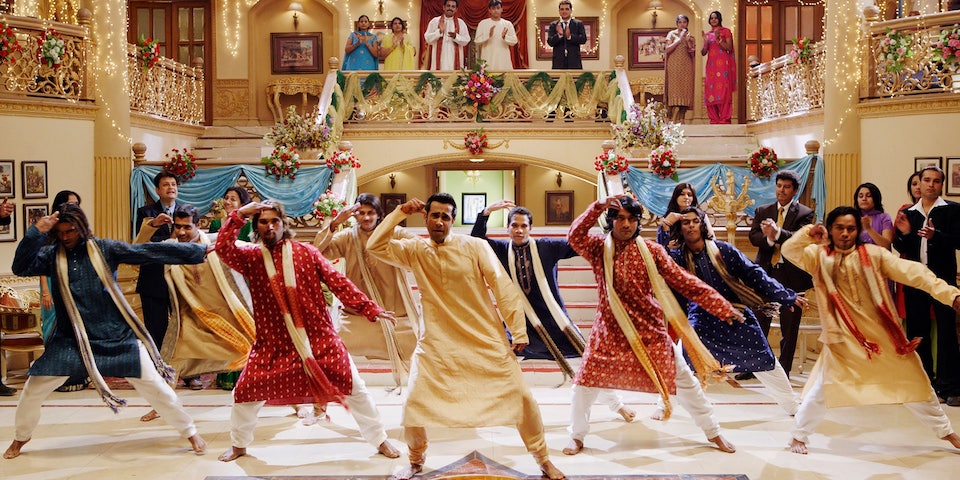
Experiences to try in India
There are so many activities and experiences you can enjoy in India. Start your day with an early morning yoga session before heading to the beautiful Taj Mahal in Agra. In the evening, take a walk in the Mughal heritage village of Kachhpura and see the sanji art paintings on the walls made by the girls of the community.

Fly in a hot air balloon to see panoramic views of Jaipur from above. Walk through the old city of Jaipur and see ancient temples, havelis, and markets. Try your hand at the traditional art of block printing at Bagru village near Jaipur.
Pass by Mehrangarh fort when you’re in Jodhpur, see the blue houses and experience exploring in an SUV and dune bashing on the golden sands of Jaisalmer.

Explore the forests of Sasan Gir National Park in Gujarat on open Jeep safaris and see the only wild habitat of Asiatic lions in the world. Participate in the kite flying festival in Ahmedabad held every year in January.
Visit the “wine capital of India” – Nashik in Maharashtra. Join wine tasting tours in various vineyards of Nashik. Experience India’s most beautiful caves like the ancient Ajanta & Ellora caves in Aurangabad – both UNESCO World Heritage Sites. Enjoy a ferry ride to Elephanta Caves in Mumbai. Even more exciting is to try your hand at Bollywood dancing under the guidance of a professional choreographer in Mumbai.


The small village of Kumbhalangi near Cochin is where you can catch crabs with the locals. Experience Kerala’s ancient form of martial arts, the Kalaripattu performance in Cochin. The traditional Kathakali dance show retells great stories of the past, mainly from Indian epics.
Cycle through tea plantations in a private tea estate located in one of the most beautiful areas of Munnar. Nature walks offer a great opportunity to see birds, butterflies and other wildlife in Thekkady.
Tourists can wear traditional Kodava attire in Coorg and try some delicious dishes. Go on an authentic food tour in Madurai, known as a city of temples with delicious food courts. Cycle through Tamil areas, Muslim areas, white towns and visit a church on a Pondicherry bike tour.

Book tours in advance during the holiday season

Between November and February every year, India is crowded with tourists. And therefore, low-cost accommodation services may run out of rooms. You should book directly with the hotels or through sites that provide online booking services. In addition, for popular routes you can book train tickets in advance. You can book tickets through the government website IRCTC or 12Go or Cleartrip websites.
Check the lunar calendar

While the solar calendar is officially used in India, major festivals of Hinduism, Buddhism, Islam and some other religions follow the lunar calendar. Therefore, always check both the lunar and solar calendars before booking a trip. The Indian government also provides a useful website about public holidays.
How to greet in India
When you travel to India it is like becoming a celebrity. People will want to talk and take pictures with you wherever you go. The customary Indian greeting is “Namaste” (“I bow to the divine in you”). It is used both for greetings and farewells. And when meeting Muslims, say “salaam alaikum” (peace be upon you) – the correct answer is “alaikum salaam”. Shaking hands is a cultural communication in business between men, but men and women rarely shake hands with each other. Also, if you are invited to an Indian home, bring a small gift (bouquet of flowers or sweets) and take off your shoes before entering.

A taboo in India you should know is that when giving or receiving something from a native, you absolutely must not use your left hand. This is considered an impolite and uncivilized act.
Be careful when traveling to India on your own
India is reported by tourists around the world as a country with poor security, especially for women. Therefore, to ensure your own safety, consider carefully if you intend to travel to India on your own, not in a group.
Do not show excessive affection in public
India does not encourage the expression of emotions because they see this as disrespecting religion and beliefs. Couples traveling to India should limit this to integrate well with the local culture, because “when in Rome, do as Romans do” is a behavior that is never redundant.
Pay attention to your actions in public

Unlike Western culture, a friendly smile and a look can be considered flirting in Indian culture. Therefore, when traveling to India, women should avoid talking to strange men. If you feel “stared at” or noticed by strange men, you should try to stay away and move to a crowded place to be safe. It’s best when traveling to India to go on a package tour or in a large group instead of going alone or with just 2-3 people to stay safe. In many unfortunate cases, Western female tourists who have the habit of traveling alone 1-2 people have encountered many unfortunate incidents in this country.
Harassment
Sexual harassment and rape make India an unsafe place for female tourists. Although this country is in a period of change regarding feminism, it still makes many people think before deciding to travel.
To avoid this situation, women should: wear a wedding ring (even if not married) and use sunglasses and headphones. This will help you limit being teased or scrutinized by men. Public transport. If you are in trouble, draw attention to yourself – others will come to your aid. Avoid getting into a taxi or tuk-tuk without anyone other than the driver. Avoid walking alone in quiet areas, especially at night. You should not accept food or drinks from strangers.
Comply with local regulations
You should avoid: taking photos of bridges, military zones and border crossings as it is considered a serious security breach. When flying within India, you may be asked to remove batteries from devices in your luggage. Smoking is also banned in public places and some areas also ban eating beef.
Be careful with heights when hiking
When setting foot in places above 2500m (8200ft), acute mountain sickness (AMS) is an unavoidable risk. AMS can be fatal. So, go slowly and rest for a few days to let your body adapt to the changes in altitude. If you feel tired while climbing, stop. If your symptoms do not improve, down the mountain immediately.
Avoid using drugs and addictive substances
India is famous for its strict anti-drug laws. Some religious groups are allowed to use cannabis for ceremonial purposes, but that does not apply to tourists. Using even a small amount of drugs can lead to a prison sentence.

Avoid using tap water
In India, drinking or brushing teeth with tap water can lead to stomach problems – the most common disease among Indians. Ideally, use purified or bottled water (or filter your own water to avoid creating plastic waste).
Be wary of scams
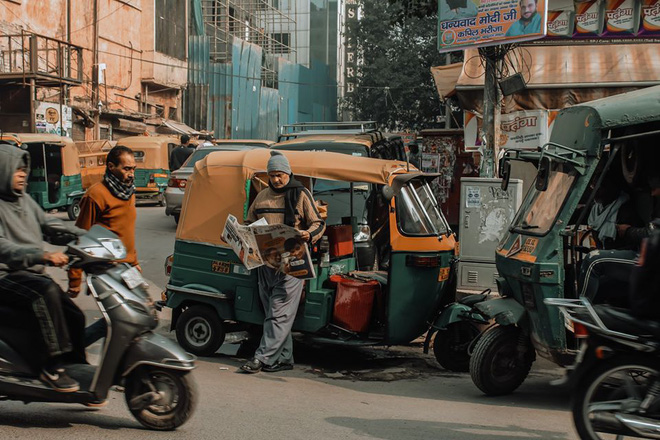
Beware of scammers taking bookings at “tourist offices”, instead you should get your travel information and make reservations at the official offices. If someone takes you to a hotel, store or other location, they usually ask for a commission, which will be added to the price you pay.
Make a good first impression
When you meet someone, you should say “Namaste”. Meanwhile, you clasp your hands in a prayer position and bow your head slightly.
Men can shake hands with men and women with women (remember, this is a light handshake, not like in the West), but many women will not shake hands with men and vice versa.
According to the rules of the hands

Anything that needs to be used with one hand (like giving a gift, a cup of tea or important documents) must be used with the right hand, the left hand is mainly used for cleaning.
In a traditional Indian meal, there are no Western cutlery because Indians eat with their hands, so your left hand should hold your tray, your right hand should be used to pick up rice, meat and vegetables to serve with the bread.
“Inglish”
All Indians speak English and Hindi – the national language spoken in the capital Delhi and much of North India. There are also a number of other local languages. That’s why the word “Inglish” means Indian English.
Sometimes there are colloquial sayings that you have never heard like: “Let’s prepone our lunch!” (meaning prepare to eat lunch earlier) or: “You are a homely person!” (meaning you are trustworthy or honest). When you hear hundreds of random sentences, you should boldly ask again so you don’t misunderstand.
Always have tissues ready when you travel
Walk a few doors down from the Western-style hotel and you’ll reach the traditional Indian-style toilets. It usually just has a black hole that goes straight down into the ground in a squat style, followed by a water spout right on the left. That’s all, so when traveling here, don’t forget to bring tissues.
Plan to spend money
Use travel cards, debit cards, credit cards, traveler’s checks and wallets for transactions. Additionally, you can exchange money at the airport, banks or travel companies. Access to international banks and ATMs is quite easy in Indian cities, but less so in small towns and villages. So always have a reasonable amount of cash. If you need money and for some reason can’t get it at an ATM, you can transfer it via Western Union.
You should buy travel insurance
Before every travel trip, no one can predict anything. Therefore, buying travel insurance is essential. It will insure you against risks related to health, accidents, travel delays, damaged or lost luggage, cancellations and other possible situations.
Do not touch books with your feet
In India, children are taught from a young age that books are the foundation of knowledge. They even have the Goddess of knowledge, music, art, speech, wisdom & learning Saraswati. Therefore, touching books with your feet or even kicking a schoolbag full of notebooks is considered disrespectful. School supplies are also considered important, and should not be touched with your feet, such as pencils, pens, etc.
Bargain when shopping
Indian tourism is famous for being a shopping paradise with countless handicraft items, gemstones, beautiful and sophisticated jewelry that few places can compare… However, foreign tourists are often criticized by people. Sales charge prices much higher than usual, so when buying any item, you should know how to bargain. Set a low price, gradually increase it and leave if it’s not reasonable. In addition, you need to prepare change to pay for the items. If you don’t have change, you can easily be denied change by the seller. In addition, if you do not intend to buy goods on the street, you should definitely refuse street vendors to avoid being enticed to follow you, even until the car rolls away.

Go to airport early
If you go alone or in a small group, you should go to famous places first, to get used to them, then go to special places later. You should also buy travel insurance before going. Delhi airport works quite slowly, so it’s best to come 4-5 hours in advance. Vietjet counters open 3 hours before check-in and close 60 minutes before departure time. So you go early and check in, then go through security procedures.
Things to know before traveling to India above are essential for your trip to explore this exciting, mysterious country. Please refer to the article above to plan the perfect trip. For me, India is a very special place because it is very different from the places I have been to, giving me many different levels of emotions. From being overwhelmed by the beauty, to being happy to be allowed to stay, to being a little annoyed because of having to argue with a taxi driver, but all in all, that is the experience of every trip. And only by going can you have those experiences.
Some best day tours, trips, activities and transfer services, tickets in, from and to New Delhi you can refer to
- Taj Mahal and Agra Fort Day Tour from Delhi
- Taj Mahal and Agra Private Day Tour by Express Train from Delhi
- 3D2N Golden Triangle Tour from Delhi
- Private Sunrise Tour Of Taj Mahal and Agra Fort from Delhi
- New & Old Delhi Day Tour
- [Klook Exclusive] Taj Mahal Private Day Tour from Delhi with One Way Airport Transfer
- Delhi Private Car Charter
- Private Tour Of Taj Mahal + Agra Fort From Agra
- 4D3N Delhi, Agra, Jaipur Private Tour with Ranthambhore Tiger Safari from Delhi
- Delhi Best of Monuments Half Day Tour
- Jaipur Day Tour from Delhi By Express Train
- Agra, Mathura, and Vrindavan Day Tour from Delhi via Luxury Bus
- 2D1N Golden Triangle Tour from Delhi
- Jaipur Private Day Tour from Delhi
- 2D Delhi and Agra Combo Private Tour
- Private City Transfers between Delhi and Himachal Pradesh/Punjab
- Old Delhi Bazaar Walking Tour
- Masterji Kee Haveli Half Day Tour
- Old Delhi (Shahjahanabad) Morning Cycling Tour

Read more India guide here.































![10 best airports in Asia in 2016 [RANKED] kuala-lumpur-international-airport-best airports in asia in 2016 by skytrax ratings](https://livingnomads.com/wp-content/uploads/2016/08/29/kuala-lumpur-international-airport-best-airports-in-asia-in-2016-by-skytrax-ratings-218x150.jpg)








